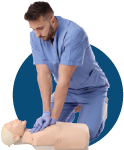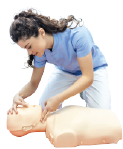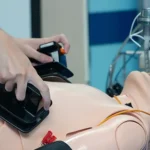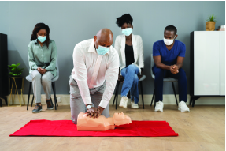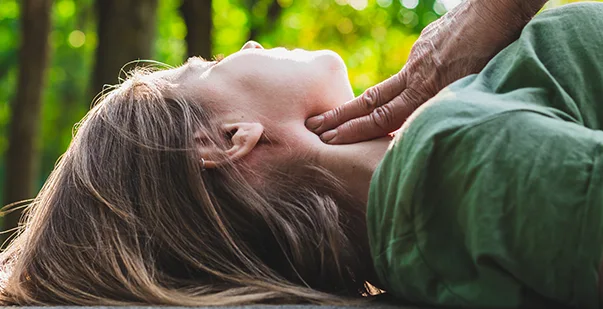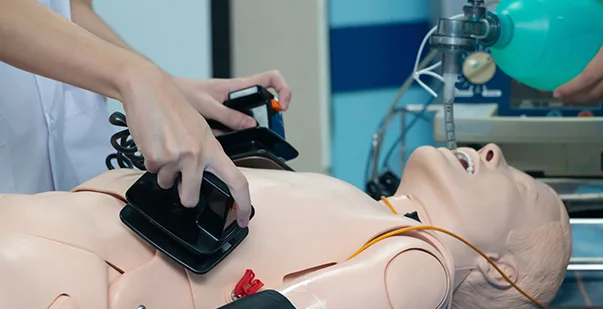If you’ve ever sprained your ankle or suffered from any form of sprain or strain, chances are your doctor advised you to start with RICE treatment. The best way to learn the RICE method of treatment is by learning first aid. Whether you are an athlete, sports trainer, gym instructor, childcare service provider, or simply a parent of a sporty kid, you must learn first aid.
You can take an online First Aid course from the American HealthCare Academy to stay prepared to provide the first line of treatment for injuries. Our course modules are easy to understand. They are 100% online. They cover many injuries and treatments for both kids and adults. Don’t delay and register with us! Now, let’s understand the benefits of the R.I.C.E method.
What does RICE stand for?
In first aid, the RICE method stands for Rest, Ice, Compression, and Elevation. It’s a first aid method to treat injuries like sprains or strains.
1. Rest: Give the injured area a break from movement. Avoid putting weight on it.
2. Ice: Apply ice to the area for about 15-20 minutes. It helps reduce swelling and pain.
3. Compression: Use a bandage to gently compress the area. This also helps with swelling.
4. Elevation: Keep the injured part elevated above heart level. This lowers the swelling.
What is the RICE method?
The RICE method is used in treating sprains and strains and is the most common first aid. It can drastically shorten the duration of recovery time.
- Rest is for giving the injury a break.
- Ice is for putting cold compressions on the injury to reduce swelling.
- Compression is when the injury is wrapped lightly.
- Elevation is when the injured area is lifted up.
RICE as First Line of Treatment for Injuries
RICE treatment is a conservative first aid method of treatment for small injuries. It can be easily done at home with common household items. In general, it aids in the reduction of edema, discomfort, and inflammation, resulting in a faster overall recovery.
When you use the RICE method, you can also take medicines like ibuprofen or naproxen to help lower swelling and pain. These steps will help you treat small injuries like sprains or strains, and get back to your activities quickly.
When should RICE be used?
RICE is used for injuries like sprains, strains, or bruises. Remember:
- Resting the wounded area is necessary for healing and rehabilitation.
- Icing helps in the relief of pain, bruising, muscular spasms, and swelling produced by an injury.
- Compression is used to keep swelling and blood loss at bay.
- Elevation can also aid with swelling and bruising.
Which injuries should be given RICE treatment?
RICE treatment helps with injuries and aids healing. It is used for:
1. Sprains: For swollen joints.
2. Strains: When muscles hurt.
3. Bruises: Swellings from hits.
4. Minor Fractures: Small bone breaks.
There is another aspect to the RICE method. Undoubtedly, it helps with swelling, but you also need blood flow for healing. Letting blood flow helps you heal faster, even if you feel a bit uncomfortable.
Rest is good, but moving a bit is better for healing. Not moving can make your muscles weak and stiff. Moving helps blood flow and makes your body stronger.
Remember one more important factor. RICE isn’t for broken bones. If you might have a break, don’t move that part. Go to a doctor pronto and seek treatment and guidance.
Don’t ice too much or on your skin directly. It can hurt your skin. Stop if your skin gets red, pale, tingly, or prickly. Put a cloth between the ice and your skin. Ice for up to 20 minutes, then let your skin warm up before icing again.
How is RICE treatment given?
1. Rest
When you get injured, stop all activities and rest as much as possible for the first two days. If you don’t rest well then injuries like moderate to severe ankle sprain might aggravate the injury. You must avoid putting any weight on the affected area for 24 to 48 hours. Resting also helps in preventing additional bruising.
2. Ice
During the first 24 to 48 hours following your accident, apply an ice pack (wrapped with a light, absorbent towel to avoid frostbite) for 15-20 minutes every two to three hours. If you don’t have an ice pack then a pack of frozen peas or corn works too. Applying ice on injuries has the following benefits:
- reduces pain
- brings down swelling
- reduces inflammation
- reduces muscle cramping and spasm
After the swelling gets better, we suggest using warm compresses instead of ice. If you require a wrap for over three days, visit a healthcare expert.
3. Compression
Compression in RICE method means wrapping the damaged area to avoid swelling. Wrap an elastic medical bandage around the damaged region. It should be snug but not too tight. If wrapped too tight it will interfere with blood flow. Loosen the bandage if the skin under the wrap turns blue or feels cold, numb, or tingly.
4. Elevation
Elevation in the RICE method means raising the painful body part above the level of your heart. This alleviates discomfort, throbbing, and swelling. It’s not as difficult as you may assume. For example, if you have an ankle injury, you must elevate your leg up on cushions while sitting on the sofa.
What is the duration of RICE treatment?
In terms of time, the RICE method for injuries should be approached in stages, depending on the type of damage.
- Resting for a long duration is normally not needed. It may be required in some circumstances such as severe sprains.
- Icing is beneficial for the first two weeks following an accident, or until all edema has subsided.
- Compression is beneficial immediately following an accident or to avoid edema after activity.
- Elevation can be stopped once most of the swelling has gone down. It usually happens within the first two weeks.
Is the RICE method effective?
Certainly! Wound recovery with rice treatment becomes slightly better. Mild to moderate injuries like bruises, sprains, and strains respond well to the RICE treatment. However, if you don’t get relief then see a doctor without delay.
Conclusion
Whether you face an injury like a sprain, strain, bruise or a minor fracture, the RICE method of treatment is known to be effective. This is why you need to be trained in first aid. The First Aid course at the American HealthCare Academy is 100% online and can be done at your pace. You can register on our website or get in touch with our team at 1-888-277-7865. If you are concerned about your injury, please get medical attention.

